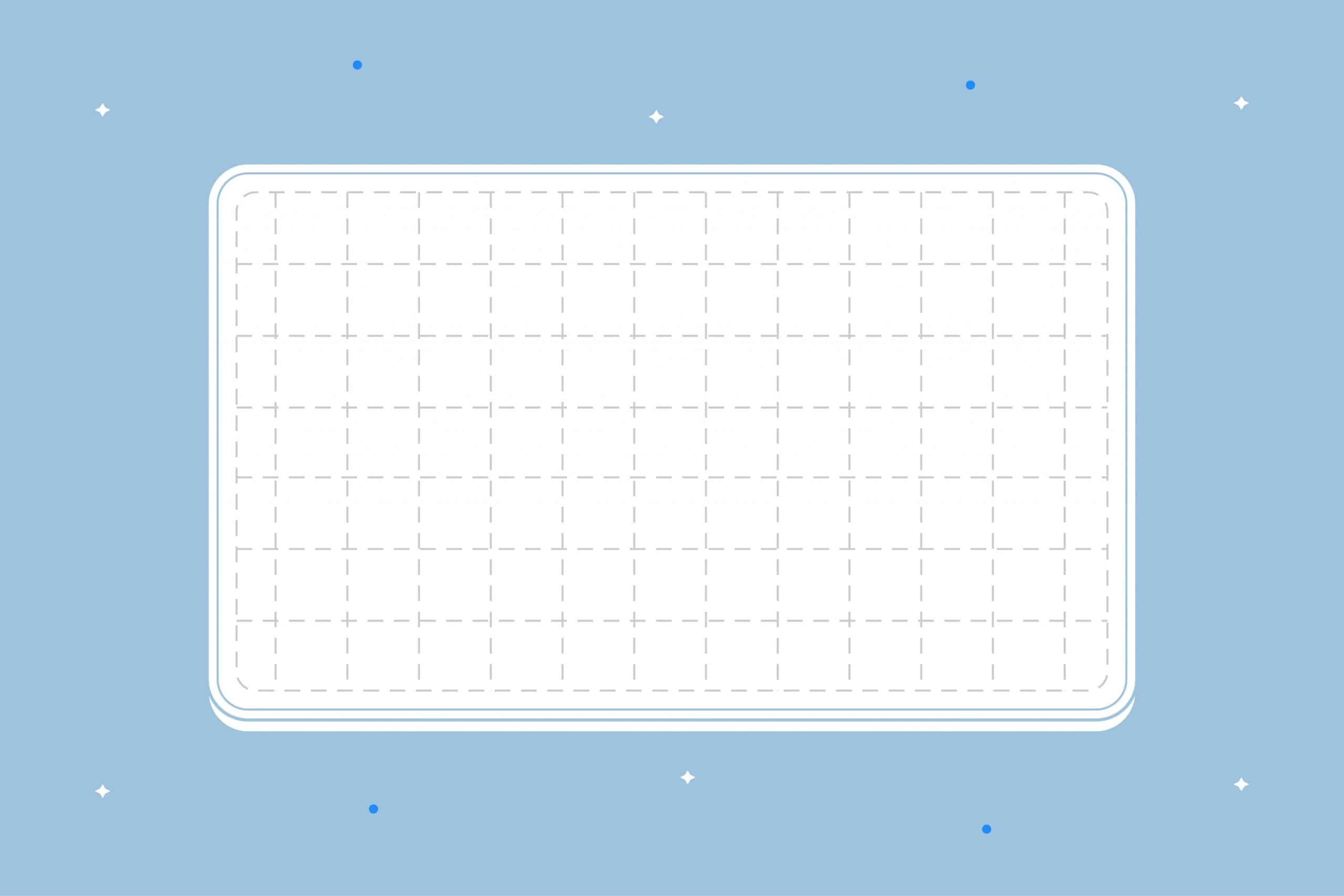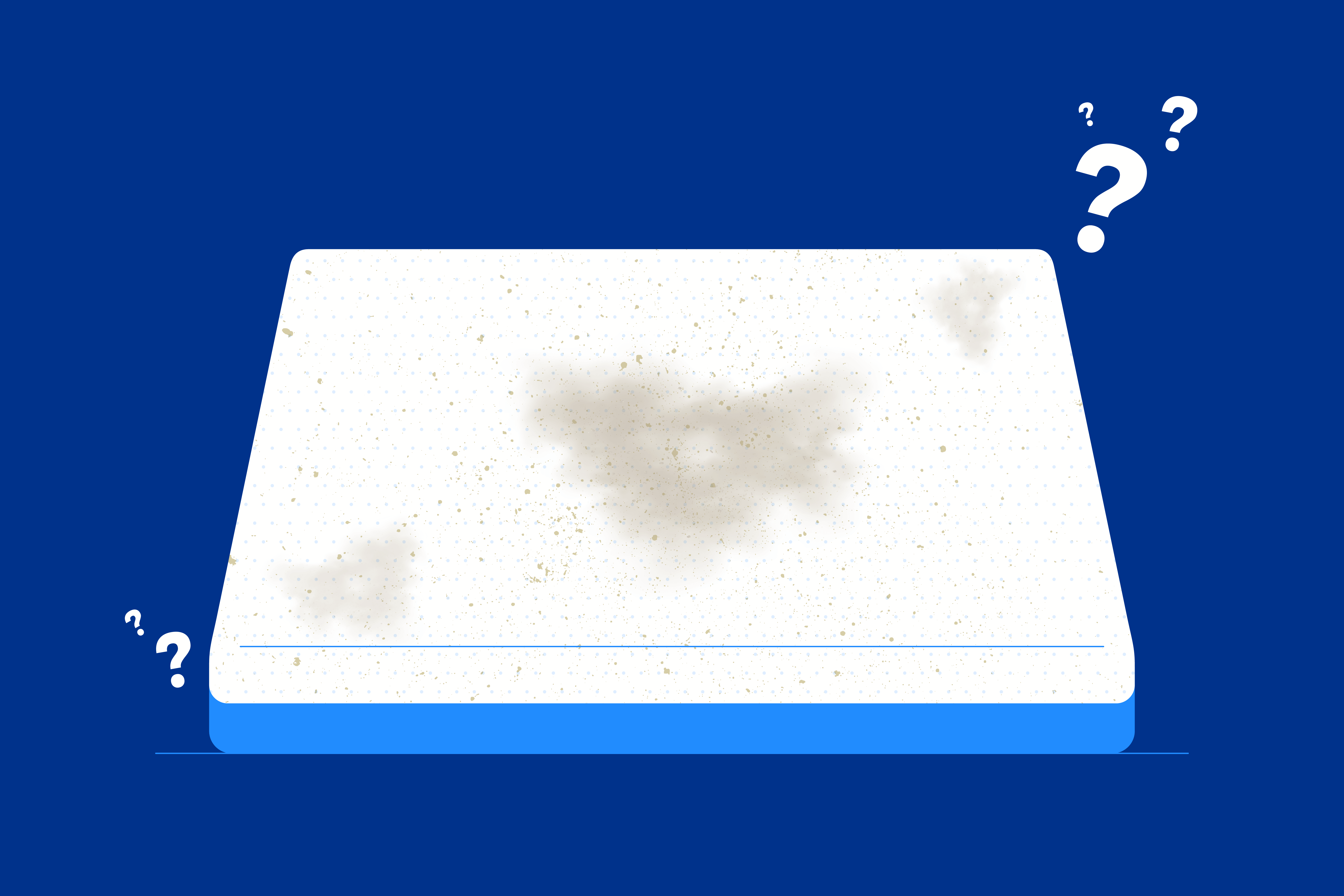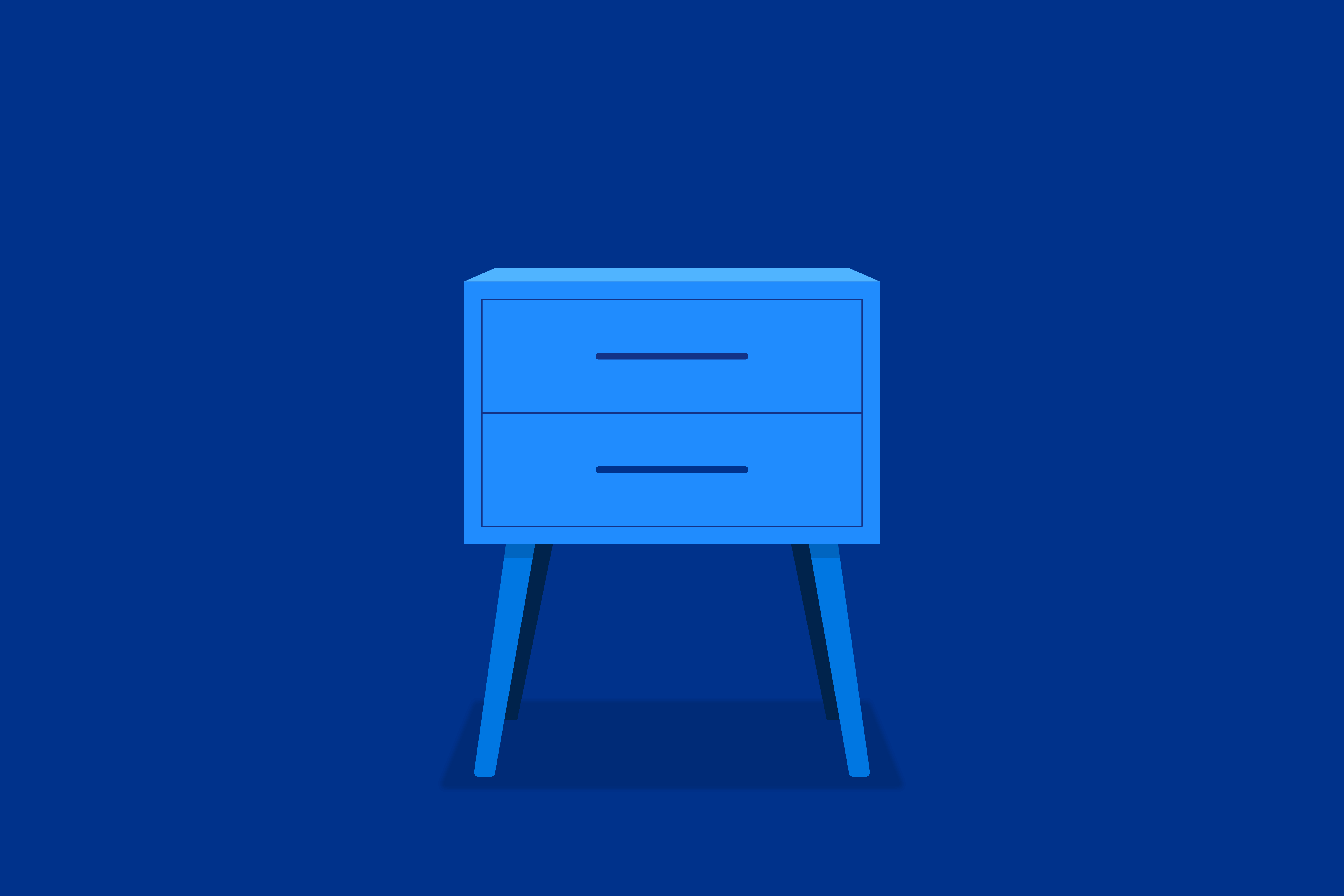Key Takeaways
- Understanding Comforter Basics: Comforters are large pouches of fabric filled with soft materials like wool, silk, cotton, or polyester. They are flatter and less fluffy than duvets and are typically quilted to keep the filling in place. Comforters offer both warmth and protection during sleep.
- Choose the Right Materials: Comforters can be filled with materials like cotton, wool, or down alternative. Down alternative options are budget-friendly and suitable for those with allergies. Natural materials like cotton are breathable and comfortable as fill and shell, while synthetic materials can retain heat. Look for a comforter with a cover thread count of 300 to 500 for the best combination of softness and durability.
- Staying Warm with a Comforter: Comforters come in different weights for various warmth needs. Choose a comforter’s weight and thickness based on your local climate and personal preference. Measure your mattress to ensure the comforter’s dimensions will adequately cover it. Comforters should be 12 to 15 inches longer than the mattress.
Pairing your new mattress with comfortable bedding can create an even more inviting sleep space. For many people, a cozy, yet stylish comforter is a perfect choice.
But what is a comforter? This bedding often goes by many different names, so it can often be confusing. The terms comforter, duvet, and bedspread are often used interchangeably. While they all serve a similar purpose, they are each slightly different.
Quick Guide: A 30-Second Summary
| Best Comforter Overall | Amerisleep Recover+ Comforter |
What is a Comforter?
A comforter is a large pouch of fabric filled with soft fibers such as wool, silk, cotton, or polyester. Comforters tend to be flatter and less fluffy than their European counterpart, the duvet. While duvets are typically filled with down, comforters can be made with several different fillings.
Some comforters may also be filled with down or a down alternative, but they will have less fill. Comforters are also quilted to keep the filling firmly in place, though this does not make them a traditional quilt.
Both comforters and bedspreads can be decorative, but bedspreads tend to be thinner and are not built for sleeping. While comforters are thinner than duvets, they do provide warmth and protection during the night.
A comforter offers several benefits. This bedding is budget-friendly, easy to care for, and available in several different colors and patterns. Read on to discover what you should look for when purchasing a new comforter.
What to Consider When Buying a Comforter
When you crawl into bed at the end of the day, your bedding should feel cozy and soft. To help you find the perfect comforter for your needs, we suggest a few helpful points to consider.
Thread Count
When selecting a comforter, it is important to consider the material’s thread count—this describes the number of threads in the material per square inch. This number will only apply to the comforter’s shell and determines its softness and durability. However, a higher thread count does not necessarily mean high quality. A comforter may feature 800 thread count cotton, but if the threads are thinner or shorter, the bedding will deteriorate quickly.
In most cases, a comforter made with 300 to 500 thread count fabric is the best option. A strong, durable weave, such as a percale weave, will also increase the comforter’s lifespan and improve breathability.
Materials and Breathability
Shell
The comforter’s shell can be made of different materials, including cotton, silk, polyester, or a blend of fabrics. Natural materials such as cotton tend to work best in the cover. These materials are soft to the touch and breathable. Shells made with synthetic fibers tend to retain heat, and won’t wick moisture away from the body the way cotton does.
Filling
The filling of a comforter is often made of cotton, wool, or a down alternative, a poly-blend that feels similar to real down. Down alternative comforters are a good option if you want the softness of down at a more budget-friendly price. Plus, genuine down can trigger allergies and nasal congestion.
Colors and Patterns
While traditional duvets are sold primarily in white, comforters are available in a variety of colors and prints. By choosing one that fits your style, you can completely change the look of your bed.
Although duvet covers are traditionally reserved for down-filled duvets, these removable covers can also be used on a comforter. A duvet cover is a large bag of fabric, similar to a pillowcase. These covers act as a protective layer between you and your bedding. They often have a button or zipper closure and interior ties that keep the comforter in place.
Using a duvet cover allows you to change your bedroom decor frequently. Plus, duvet covers are designed to be used without a top sheet since they protect the bedding from dirt, sweat, and other body oils. If you use your comforter without a cover, it is best to place it on top of your sheets to keep it clean and germ-free.
Warmth
When choosing a comforter, be sure to consider your local climate. The weight and thickness of the bedding will determine how much warmth it provides. If you live in a colder area, you may want something thicker for the colder months when you need to stay warm in bed, and thinner for the warmer months.
Some comforters are considered appropriate for year-round use. This means the materials provide enough insulation to keep you warm during the winter, but they are also breathable enough to prevent overheating during the summer months. Ideally, you want to use a comforter and cover only, avoiding the issue of too many blankets while trying to stay warm.
Sizing
Mattress sizes are standard in the United States. However, comforter sizes can vary from brand to brand. Therefore, it is a good idea to determine the exact size you need before purchasing. To do so, measure the thickness and the width of your mattress, and add these numbers together.
If your mattress is 60 inches wide and 12 inches high, you should select a comforter that is at least 84 inches wide. This will allow the bedding to completely cover your mattress and hang over the sides of the bed.
In terms of length, the comforters should measure 12 to 15 inches longer than the mattress. For example, a queen size mattress measures 80 inches long, so the comforter should be at least 92 inches long.
Cost
Comforters are often sold in a bedding set that includes the comforter, a set of sheets, and two pillow shams. Each item comes in a color or print that complements the others so they can be used together.
Most comforter sets are relatively inexpensive—costing between $100 and $120. Higher quality comforters made with down alternatives and more advanced materials are often sold separately and cost between $200 and $300. Duvets made with genuine down have a higher price point. Down duvets can cost between $200 and $500.
Our Amerisleep Recover+ Comforter
Our Amerisleep Recover+ Comforter features FDA-determined Celliant® in both the shell and the filling. This material helps to control moisture and humidity to prevent overheating. Plus, Celliant® absorbs body heat and converts it into infrared energy. As the muscles absorb this energy, it improves local circulation, which promotes deeper sleep and speeds up recovery.
The Lyocell, Cellinat®, and poly-blend filling create a cloud-like feel that is also cool and breathable. This comforter is perfect for year-round use and will keep you cozy and dry no matter the season.
We recommend pairing our Amerisleep Recover+ Comforter with our Percale Duvet Cover. This cover is made with 100 percent long-staple percale cotton that is airy and soft. The tight percale weave also makes this cover incredibly durable, allowing it to protect your comforter for many years.
Our Recover+ Comforter comes with a 1-year limited warranty, and the Percale Duvet Cover comes with a 5-year limited warranty.
Prices of the Recover+ Comforter
| Comforter Sizes | Dimensions | Price |
|---|---|---|
| Twin XL | 68 inches by 88 inches | $250 |
| Full/Queen | 90 inches by 94 inches | $290 |
| King | 104 inches by 94 inches | $350 |
How to Wash a Comforter
Most comforters are machine washable. However, be sure to read the care instructions before cleaning. Down comforters often require dry cleaning.
If you have a large, front-loading washing machine at home, washing your comforter at home should be fairly straightforward. If you have a smaller appliance, you may need to take a queen or king size comforter to the laundromat to be washed in a large, industrial-size machine.
Comforters can also be dried on a low heat setting. Two clean tennis balls or wool dryer balls can be placed in with the bedding to keep the filling evenly distributed and break up any clumps.
Frequently Asked Questions
What is the difference between a comforter and a duvet?
European style duvets typically have a down filling, while comforters can be filled with different fibers. Comforters also do not require a cover. They are comfortable and soft on their own. Duvets, on the other hand, need a cover to protect against ticking. This occurs when the hard end of the feather quill sticks up through the shell of the duvet. Without a cover, ticking may cause discomfort.
Can you use a duvet cover on a comforter?
Yes! Wrapping your comforter in a cover will protect it from dirt, sweat, and general wear and tear. Plus, a cover is a great way to change the look of your bedding.
What is a comforter shell?
The shell of the comforter is the large fabric pouch that holds the filling in place. The shell is typically made of a soft, breathable material such as cotton. The shell can also be quilted, which keeps the filling firmly in place.
How often should you wash a comforter?
If you protect your comforter with a cover or a flat sheet, you can wash the comforter once every 4 to 6 months. However, duvet covers and sheets should be washed weekly.
Which is warmer, a duvet or a comforter?
The warmth of a comforter or duvet will depend on the materials used. Comforters filled with natural materials such as cotton, Lyocell, bamboo, or down tend to be breathable, yet insulating. These fabrics keep you warm and cozy in the winter and cool during the summer.
Can I use an electric blanket with a comforter?
Certainly, you can use an electric blanket with a comforter. Layering the electric blanket under the comforter can enhance the overall warmth of your bedding, offering a cozy combination.
It’s important to ensure the electric blanket is evenly spread beneath the comforter to maximize comfort and safety. Following the manufacturer’s recommendations for proper usage and electric blanket safety.
Conclusion
A high-quality comforter is a great way to create a soothing sleep environment. There is nothing better than curling up with a soft, fluffy blanket or comforter, after all.
With the right bedding, you will feel calm and be more likely to drift off to sleep quickly. To prevent nighttime disruptions, be sure to select a comforter that will keep you cool and relaxed so that you can get a good night’s sleep.
About the author
Mitchell Tollsen is a graduate student and a freelance writer who’s contributed to the Early Bird blog for three years. Mitchell’s always been fascinated by the science of sleep and the restorative processes our bodies undergo when at rest. The self-titled “Sleep Expert” is always looking for ways to improve his shut-eye, and throughout the years has implemented numerous lifestyle changes and tried dozens of sleep-promoting gadgets to determine the best ways to truly get better rest.
View all posts






